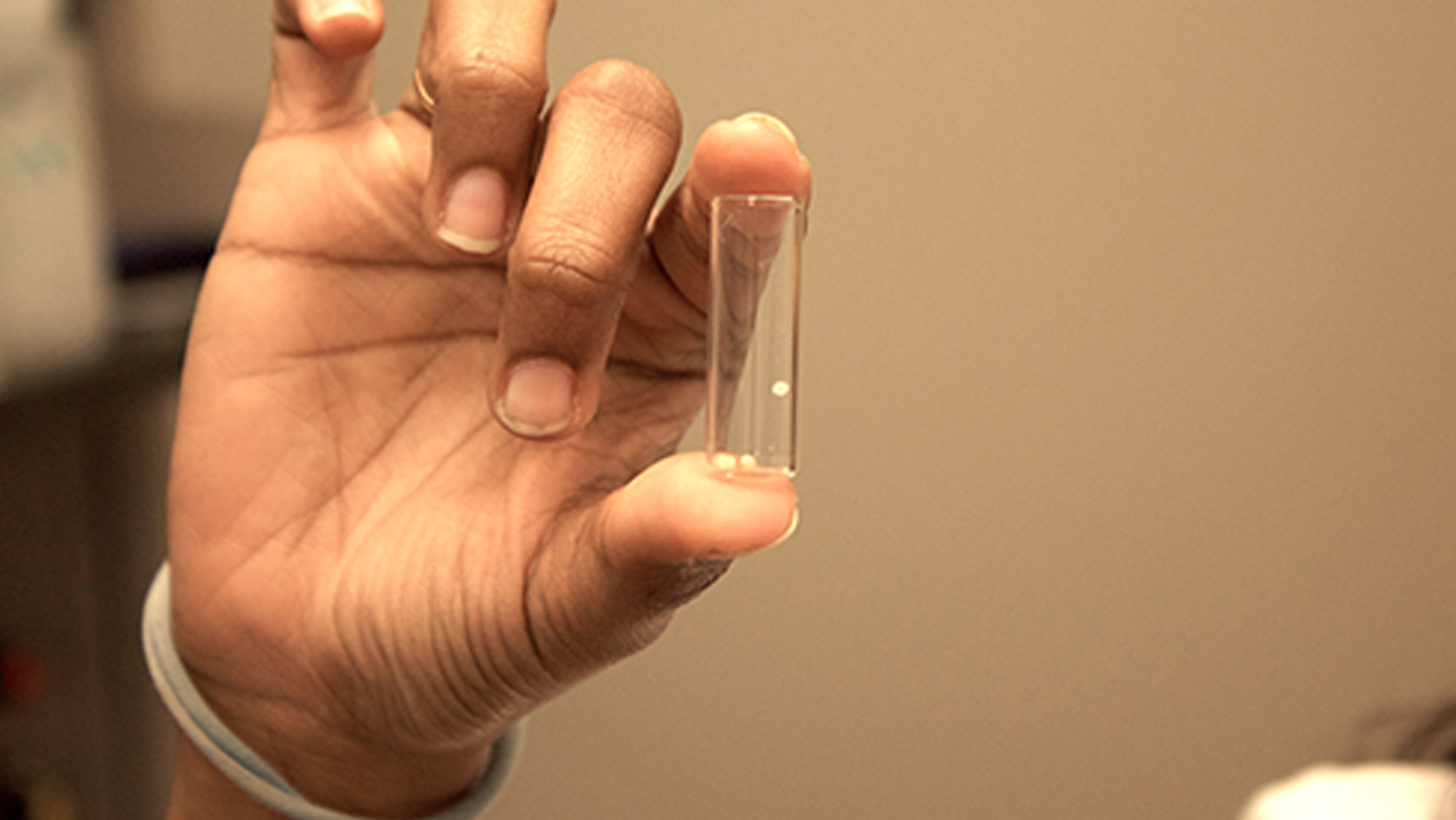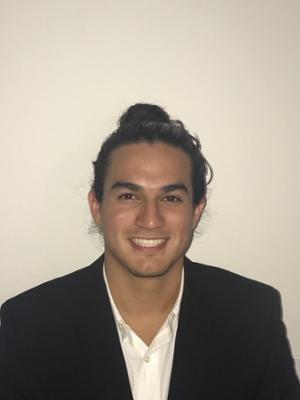
To improve the viability of vaccines, as well as improve treatment in humans and pets, Texas A&M University biomedical engineering doctoral student Shreedevi Arun Kumar and junior Daniel Prasca have helped develop a “bubble” that can hold vaccines and additional medicines in a protective sphere.
“We wanted to think about all these different challenges and combine them into one solution, and that’s a drug delivery form that can help protect the vaccine,” Arun Kumar said. “The drug is inside a bubble, which protects it from the elements.”
The students researched the bubbles as part of their work in a lab run by Dr. Corey Bishop, assistant professor in the Department of Biomedical Engineering. Medication is injected into the center of the bubble, developed out of a polymer used in many applications approved by the U.S. Food and Drug Administration. Each bubble is given a timestamp that allows physicians to schedule when the medication is activated, whether it happens right after it is applied or on a time delay.
Additionally, if a release needs to be sped up within a patient, it can be targeted with a laser outside the body to activate the medication. The bubble can withstand temperatures slightly above room temperature.
The bubbles can also keep the medication from expiring too fast. While the United States has generators and monitors to ensure the effectiveness of vaccines and keep them transported and incubated, third world countries don’t have these measures.
“In these countries, vaccine transport is very costly because there are extreme climate regions in these deserts where you have to keep them stored at specific conditions to keep them viable,” Arun Kumar said.

The bubbles can be used in a variety of other ways, and for more than just vaccines. The research is also applicable for cancer treatments, which was Arun Kumar’s main interest when she joined Bishop’s lab.
“These drugs for chemotherapy can be toxic because it has to be in the body longer until it reaches the target area, but we can optimize the amount of those drugs in these bubbles,” Arun Kumar said. “We can deliver different drugs at different times which is proven to be more effective.”

Prasca said he was interested in pursuing biomedical engineering because he's interested in learning about the human body and health, as well as working with small materials such as cells and nanomedicine.
"Biomedical engineering can help me connect those two," Prasca said.
To further develop the product, both participated in the 2018 NSF I-Corps Site Fellowship Program. Arun Kumar said the program walked them through basic business skills and taught them how to conduct market research, which led to other applications of their project.
“The core behind the program is to develop technologies – a lot of these technologies are developed, but people don’t see the bigger picture until they’re done developing the product,” Arun Kumar said.
During the six-week program, the students interviewed 30 people from the biomedical engineering industry to better understand the challenges they face with vaccines.
"We come from an engineering background, so we don’t have much of a business or entrepreneurship background," Prasca said. "This program allowed us to see if there actually is need that we’re filling. We learned about which groups we’re actually trying to target and also discovered other groups that we weren’t aware of that we could possibly impact."
Arun Kumar said she learned how veterinarians could use the invention to keep vaccines for outdoor animals viable until owners can bring them in. In pediatrics, doctors can put multiple vaccines in this bubble so children receive fewer shots and time delay the vaccines.
“Through my interviews, I found out veterinarians and pediatricians would benefit from this technology more than I would have ever thought,” Arun Kumar said. “(The program) pushed me to go out there and ask questions. I didn’t even think they would agree to meet with me and talk with me, but I spoke with a lot of people across the country.”
Arun Kumar said the next step is to optimize the size of the bubbles for clinical use, conduct more studies and continue with customer interviews. Her long-term goal is to apply this technology in a clinical setting.